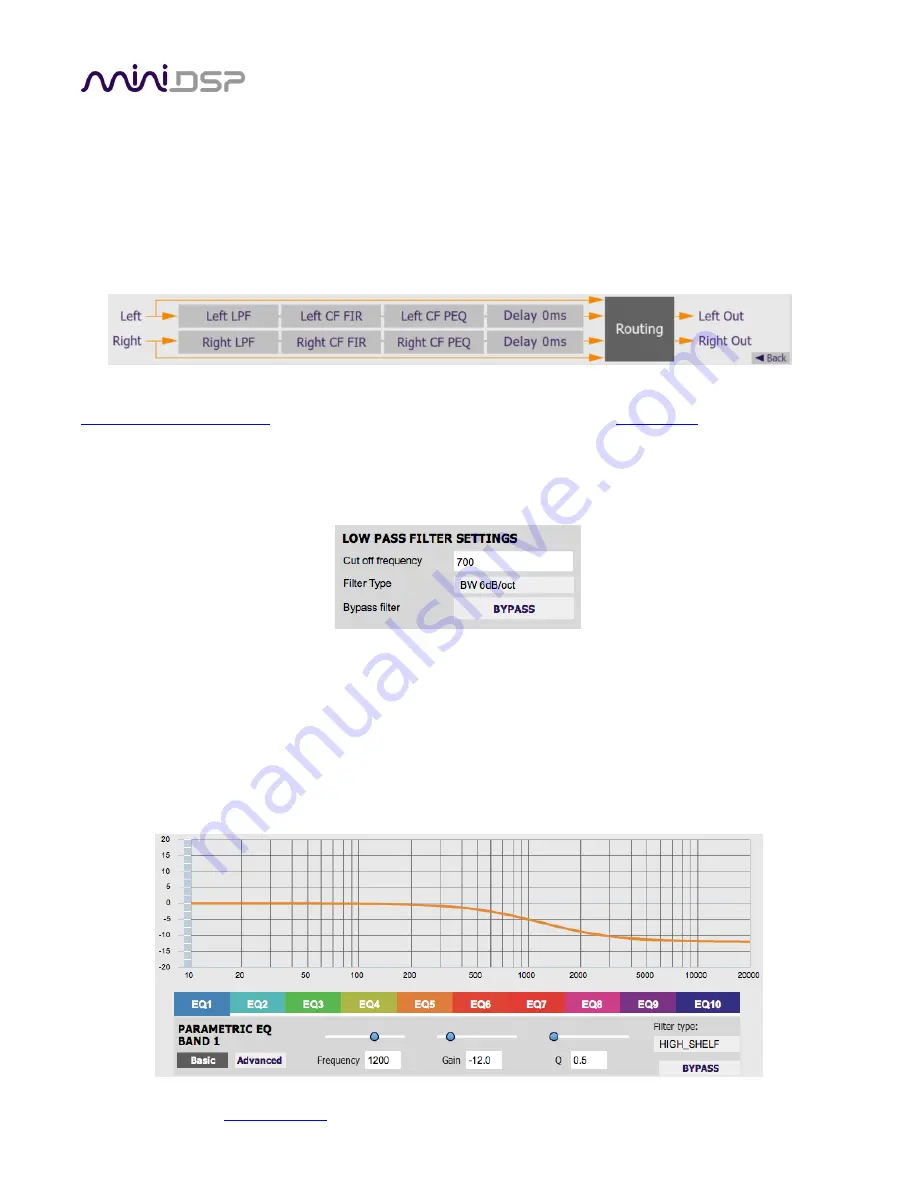
miniDSP Ltd, Hong Kong /
/ Features and specifications subject to change without prior notice
38
8.10
C
ROSS
-
FEED PROCESSING
Cross-feed processing for headphones feeds some of the right channel signal to the left ear, and some of the left
channel signal to the right ear. This is intended to make headphone listening sound more natural (such as when
listening to stereo speakers), and to reduce listening fatigue
with recordings that are “hard panned.”
The
amount of cross-feed that is preferred depends on the listener.
The miniDSP implementation of cross-
feed is “open” –
that is, the plugin and processing does not decide how
the cross-feed is implemented, but provides DSP tools so
you
to choose how to implement the cross-feed.
For the sake of an example to aid explanation, this section uses a classic cross-feed simulation as described here:
. An early reference for this type of cross-feed is on
8.10.1
Low-pass filter (LPF)
Classic cross-feed filters generally incorporate a low-pass filter at around 700 Hz. This is either first or second
order i.e. 6 or 12 dB/octave. Here is the first-order example:
8.10.2
FIR filter and Parametric EQ (PEQ)
FIR filtering and parametric EQ can be used to provide precise tailoring of the cross-feed signal. These blocks
operate in the same manner as the FIR and PEQ blocks on the main signal path (Sections 8.9 and 8.7). This
filtering is used to provide more accurate simulation of HRTF (head-related transfer function).
For the classic cross-feed simulation, these blocks are not used. However, one simple option is to use a shelving
filter instead of the lowpass filter as shown just above. A filter such as shown next will result in some slight
cross-feed at high frequencies and give you a different set of parameters to try adjusting:











































